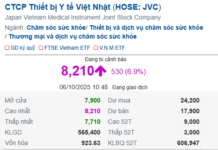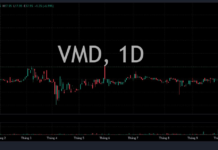
Philippines
The Philippine Statistics Authority said that due to increasing inflation and rising interest rates leading to lower household spending, the GDP growth of the Philippines in 2023 is only 5.6% compared to the same period, much lower than the 7.6% achieved in 2022 and not meeting the government’s target of 6%-7%.
According to senior economist at ING Bank (Manila) Nicholas Antonio Mapa, if interest rates do not rise sharply, the Philippines’ economic growth could be higher than the figure of 5.6%.
Economist at China Banking Corp (Manila) Domini Velasquez predicts that the economic growth of the Philippines will be higher in 2024 due to slowing inflation and the possibility of the Central Bank of the Philippines cutting interest rates in the second half of this year.
“However, we note that the economy will still face headwinds such as global economic recession and increasing political tension,” the expert noted.
Vietnam
According to the General Statistics Office, Vietnam’s GDP in 2023 is estimated to increase by 5.05% compared to the previous year. In terms of the total value added to the entire economy, the agriculture, forestry, and fisheries sector increased by 3.83%, contributing 8.84%; the industry and construction sector increased by 3.74%, contributing 28.87%; the service sector increased by 6.82%, contributing 62.29%.
In the fourth quarter of 2023, Vietnam’s GDP is estimated to increase by 6.72% compared to the same period last year, higher than the fourth quarter of 2020-2022 and with a positive trend, higher than the previous quarter (the first quarter increased by 3.41%, the second quarter increased by 4.25%, the third quarter increased by 5.47%).
In which, the agriculture, forestry, and fisheries sector increased by 4.13%, contributing 7.51% to the total value added; the industry and construction sector increased by 7.35%, contributing 42.58%; the service sector increased by 7.29%, contributing 49.91%.
In terms of the economic structure in 2023, the agriculture, forestry, and fisheries sector accounted for 11.96%; the industry and construction sector accounted for 37.12%; the service sector accounted for 42.54%; product tax minus product subsidies accounted for 8.38% (the corresponding structure of 2022 is 11.96%; 38.17%; 41.32%; 8.55%).

Indonesia
According to the latest data from the Indonesian Statistics Agency, the GDP growth of the country in 2023 is 5.05%, lower than the figure of 5.31% achieved in 2022. The reason for the lower GDP growth in 2023 compared to 2022 in the largest economy in Southeast Asia is due to lower commodity prices and weaker external demand. Specifically, Indonesia’s export turnover in 2023 only increased by 1.32%, much lower than the 16.32% achieved in 2022.
Capital Economics predicts that Indonesia’s GDP growth will be around 4.5% in 2024. According to economist Ankita Amajuri, low commodity prices and weaker global demand have weighed on Indonesia’s exports in 2023.
“We expect growth in developed economies to continue to be difficult and low commodity prices, which may affect Indonesia’s exports in the future,” the expert said.
Meanwhile, Tadashi Morishima, fund advisor at MUFG Bank in Jakarta, said: “In the context of China’s economic slowdown and uncertain global demand, Indonesia’s exports are unlikely to be a growth driver in 2024. The question is whether consumer spending and private investment can be maintained or developed.”
Malaysia
According to the Malaysian Statistics Department, in 2023, Malaysia’s GDP is estimated to grow by 3.8%. Specifically, the service sector will grow by 5.4%, followed by the construction sector (5.8%) and the manufacturing sector (0.8%). The Statistics Department of Malaysia said that the modest growth of the country in 2023 is due to a decline in commodity exports due to weak global demand and low commodity prices. Specifically, in the fourth quarter of 2023, Malaysia’s GDP is estimated to increase by 3.4% compared to the same period.
“We believe that Malaysia’s economic growth will remain relatively weak in the future due to rising interest rates, stagnant labor market, weak external demand, and declining commodity prices, which put pressure on production and business activities,” said Shivaan Tandon, an economist at Capital Economics.
Thailand
According to the National Economic and Social Development Council (NESDC), Thailand’s GDP growth in 2023 is 1.9%, lower than the 2.5% growth in 2022 due to weak exports. Specifically, in the fourth quarter of 2023, Thailand’s GDP increased by 1.7% compared to the same period, higher than the 1.5% growth achieved in the third quarter of 2023.
Enrico Tanuwidjaja, an economist at UOB, said: “Thailand’s economic growth in 2024 will be supported by the recovery of external demand for goods and services of the country, stable private consumption…”.
“However, the recovery may be hindered by the risks of a recession originating from political conflicts, major economies in the world experiencing a stronger recession than expected, and the uncertain economic recovery of China,” the expert added.
Singapore
According to the announcement of the Ministry of Trade and Industry (MTI) of Singapore, in the context of global economic recession, Singapore’s economy recorded a GDP growth rate of 1.2% in 2023.
In particular, in the fourth quarter of 2023, according to the MTI, Singapore’s GDP growth rate reached 2.8%. The MTI said that Singapore’s GDP growth rate was lower than the 3.6% in 2022 due to weak commodity demand from key trading partners such as the United States, Europe, and China.
Singapore expects the country’s GDP growth in 2024 to be in the range of 1%-3% with expectations for the recovery of the semiconductor industry and other export items.
Nikkei Asia evaluates that weak global demand has affected the economies of export-oriented countries in Southeast Asia. Accordingly, the GDP growth of Malaysia, Singapore, and Vietnam in 2023 is lower than in previous years due to central banks tightening monetary policy and the Chinese economy, the largest trading partner of many countries in the region, tending to slow down.
In 2022, Malaysia was the country with the highest economic growth in the ASEAN-6 region, with a GDP growth rate of 8.7%. Vietnam ranked second in the ASEAN-6 countries with GDP growth of 8.02%. The Philippines ranked third with a GDP growth rate of 7.6% compared to the same period. They were followed by Indonesia, Singapore, and Thailand with GDP growth rates of 5.31%, 3.8%, and 2.6% respectively.
Thus, if compared to 2022, the rankings of GDP growth of ASEAN-6 countries have changed in 2023. Specifically, in 2023, the Philippines is the country with the highest economic growth in the ASEAN-6 region, with a GDP growth rate of 5.6%. Vietnam and Indonesia are the second and third economies with the highest GDP growth in the ASEAN-6 countries with GDP growth rates of 5.05% each.
Malaysia ranks fourth with a GDP growth rate of 3.8% compared to the same period. Thailand and Singapore rank fifth and sixth with GDP growth rates of 1.9% and 1.2% respectively.





































